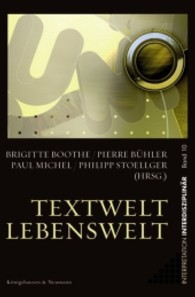Full Description
Clearly explaining the "how to" of stress management and prevention, STRESS MANAGEMENT FOR LIFE, 4th Edition emphasizes experiential learning and encourages readers to personalize text information through practical applications and a "tool box" of stress-reducing resources, including activities and online stress-relief audio files. Michael Olpin and Margie Hesson offer more than just a book about stress; they offer readers a life-changing experience. Well-researched and engaging, the book empowers students to experience personal wellness by understanding and managing stress, gives stress-related topics a real-life context, and motivates students to manage stress in a way that accommodates their lifestyle, values, and goals.
Contents
PART I: GETTING STARTED.
1. Stress in Today's World.
Stress in Today's World. Stress: What Is It? Yerkes-Dodson Principle. The Terminology of Stress. Good and Bad Stress. Acute and Chronic Stress. Holistic Health. Understanding Health. Dimensions of Health. Physical Health. Intellectual Health. Emotional Health. Spiritual Health. Social Health. Holistic Health: Putting It All Together. Nature or Nurture. Sources of Stress. Time Management. Personal Expectations. Family Expectations and Family Life. Employment Decisions and Finances. School Pressures. Living Arrangements. Relationships. Physical Health Issues. Environmental Stressors. Information Overload. Choices. Daily Hassles. Conclusion.
2. Self-Assessment.
Self-Assessment. Where Are You Now Stress-Wise? Assess Your Stress. Resting Heart Rate. Breathing Pattern. Respiration Rate. Stress-o-Meter. Assess Your Stress Results. Symptoms of Stress: Assessment. Perceived Stress Scale (PSS). Inventory of College Students' Recent Life Experiences. Ardell Wellness Stress Test. Student Stress Scale. Stress Vulnerability Factors. Tombstone Test. Daily Stress Diary. Conclusion.
PART II: UNDERSTANDING STRESS.
3. The Science of Stress.
The Science of Stress. Stress and the Big Bear. The Fight-or-Flight Response. Physiological Response to Stress. Autonomic Nervous System Responses. The Stress Response in Today's World. Acute Stress. Chronic Stress. The General Adaptation Syndrome. History of the General Adaptation Syndrome. Stages of the General Adaptation Syndrome. Application of the General Adaptation Syndrome. The Stress Response and You. Five Myths About Stress. Myth 1: In an Ideal world, There Would Be No Stress. Myth 2: What Is Stressful to Me Is Stressful to You. Myth 3: Only Unpleasant Situations Are Stressful. Myth 4: No Symptoms, No Stress. Myth 5: Stress Is Inevitable, So You Can't Do Anything About It. Conclusion.
4. The Mind/Body Connection.
The Mind/Body Connection. Psychological Health. The Role of Chronic Stress in Disease. Direct and Indirect Effects of Chronic Stress. Allostatic Load. Medium-Term Chronic Stress. Effects of Medium-Term Chronic Stress. Medium-Term Stress and the Immune System. Long-Term Chronic Stress. Stress and the Heart. Stress and the Immune System. Stress and Aging. Stress and Inflammation. Other Disease Conditions of Stress. How the Mind and Body Communicate. Psychosomatic Illness. The Placebo and Nocebo Effects. Psychoneuroimmunology. Conclusion.
PART III: STRESS-PREVENTION STRATEGIES.
5. The Power of Perception.
The Power of Perception. Perception. Are You in Danger? Stress Comes from Within. The World is NOT a Stressful Place. Cognitive Restructuring. Hardiness. Commitment—Turning Problems into Opportunities. Challenge—Change as Challenge Rather Than Threat. Control. Putting It All Together. Conclusion.
6. Thinking and Choosing.
Thinking and Choosing. Cognitive Distortions. Thinking Errors. Cognitive Techniques That Help Overcome Distorted Thinking. Positive Self-Talk. Thought-Stopping. Power Language. Going with the Flow. Underlying Theories and Practices. Conditioned-Response. Choice. Levels of Responding. Rational Emotive Behavior Therapy. REBT Guidelines. ABCDE Technique. Conclusion.
7. Mindfulness.
Mindfulness. The Nature of Reality. The Here and Now. Understanding Mindfulness. Qualities of Mindfulness. Beginner's Mind: Thinking Like a Child. Non-Judging. Acceptance of What Is Happening. Non-Attachment. Non-Striving. Mindfulness as a Way of Being. Why Be Mindful?. Benefits of Mindfulness. Experiencing Mindfulness: Testing the Principle. A Simple Mindful Exercise. Inner Mindfulness Meditation. Ways to Practice Being More Mindful. Planning for the Future. Putting It All Together. Conclusion.
8. Managing Emotions.
Managing Emotions. The Physiology of Emotions. The Benefits of Positive Emotions. Guilt and Worry. Letting Go of Worry. Guidelines to Help You Manage Worry. Relieving Test Anxiety. Letting Go of Guilt. Fear. Types of Fear. It's about








